SITS
Synonym(s):Disodium 4-acetamido-4′-isothiocyanato-stilben-2,2′-disulfonate;SITS
- CAS NO.:51023-76-8
- Empirical Formula: C17H12N2Na2O7S3
- Molecular Weight: 498.46
- MDL number: MFCD00007485
- EINECS: 256-919-4
- SAFETY DATA SHEET (SDS)
- Update Date: 2024-12-18 14:08:57
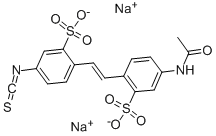
What is SITS?
Chemical properties
Light Yellow Solid
The Uses of SITS
A fluorescent label for the specific and reversible labelling of the outer components of the plasma membrane. The reagent reacts with a fixed number of sites on the surface of cells concerned with anion permeation; does not pass through the osmotic barrier of the membrane; reacts under physiological conditions of temperature, pH and tonicity; and is detectable in small amounts. SEE ALSO NOTES FOR DIDS (CAT#D460600). Fluorescence: max. Abs. l = 336nm, max. Em. l = 436 nm.
The Uses of SITS
Fluorescent marker for membranes; inhibits anion permeability of membranes. Also inactivates Na,K-ATPase, by covalent modification of a specific Lys residue.
Properties of SITS
| Melting point: | >300°C (dec.) |
| storage temp. | -20°C |
| solubility | Soluble in water, methanol, dimethyl
sulfoxide |
| form | powder |
| color | Yellow or tan-yellow |
| λmax | 336 nm |
| BRN | 9177451 |
| Stability: | Temperature sensitive - recommended storage at -20oC |
| Biological Applications | Chloride channel blockers; anion transport inhibitors; treating cancer,glaucoma,heart diseases,viral diseases |
| CAS DataBase Reference | 51023-76-8(CAS DataBase Reference) |
| EPA Substance Registry System | Benzenesulfonic acid, 5-(acetylamino)-2-[2-(4-isothiocyanato-2-sulfophenyl)ethenyl]-, disodium salt (51023-76-8) |
Safety information for SITS
| Signal word | Danger |
| Pictogram(s) |
 Exclamation Mark Irritant GHS07  Health Hazard GHS08 |
| GHS Hazard Statements |
H302:Acute toxicity,oral H315:Skin corrosion/irritation H319:Serious eye damage/eye irritation H334:Sensitisation, respiratory H335:Specific target organ toxicity, single exposure;Respiratory tract irritation |
| Precautionary Statement Codes |
P302+P352:IF ON SKIN: wash with plenty of soap and water. P305+P351+P338:IF IN EYES: Rinse cautiously with water for several minutes. Remove contact lenses, if present and easy to do. Continuerinsing. |
Computed Descriptors for SITS
New Products
(S)-3-Aminobutanenitrile hydrochloride 4-Methylphenylacetic acid N-Boc-D-alaninol N-BOC-D/L-ALANINOL Tert-butyl bis(2-chloroethyl)carbamate 3-Morpholino-1-(4-nitrophenyl)-5,6-dihydropyridin- 2(1H)-one Furan-2,5-Dicarboxylic Acid Tropic acid 1-Bromo-3,5-Di-Tert-Butylbenzene S-2-CHLORO PROPIONIC ACID ETHYL ISOCYANOACETATE 2-Bromo-1,3-Bis(Dimethylamino)Trimethinium Hexafluorophosphate 4-IODO BENZOIC ACID 3-NITRO-2-METHYL ANILINE 1-(2,4-DICHLOROPHENYL) ETHANAMINE (2-Hydroxyphenyl)acetonitrile 4-Bromopyrazole 2-(Cyanocyclohexyl)acetic acid 4-methoxy-3,5-dinitropyridine 1-(4-(aminomethyl)benzyl)urea hydrochloride 2-aminopropyl benzoate hydrochloride diethyl 2-(2-((tertbutoxycarbonyl)amino) ethyl)malonate tert-butyl 4- (ureidomethyl)benzylcarbamate Ethyl-2-chloro((4-methoxyphenyl)hydrazono)acetateRelated products of tetrahydrofuran

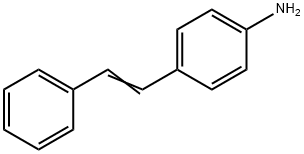
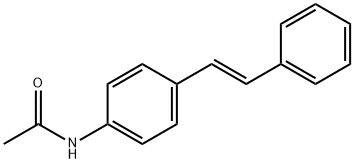
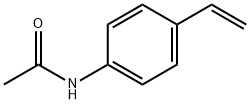
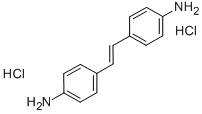
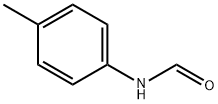
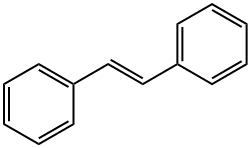

You may like
-
 4-Acetamido-4′-isothiocyanato-2,2′-stilbenedisulfonic acid disodium salt hydrate CAS 51023-76-8View Details
4-Acetamido-4′-isothiocyanato-2,2′-stilbenedisulfonic acid disodium salt hydrate CAS 51023-76-8View Details
51023-76-8 -
 2033-24-1 98%View Details
2033-24-1 98%View Details
2033-24-1 -
 1975-50-4 98%View Details
1975-50-4 98%View Details
1975-50-4 -
 2-HYDROXY BENZYL ALCOHOL 98%View Details
2-HYDROXY BENZYL ALCOHOL 98%View Details
90-01-7 -
 2-Chloro-1,3-Bis(Dimethylamino)Trimethinium Hexafluorophosphate 221615-75-4 98%View Details
2-Chloro-1,3-Bis(Dimethylamino)Trimethinium Hexafluorophosphate 221615-75-4 98%View Details
221615-75-4 -
 61397-56-6 CIS BROMO BENZOATE 98%View Details
61397-56-6 CIS BROMO BENZOATE 98%View Details
61397-56-6 -
 14714-50-2 (2-Hydroxyphenyl)acetonitrile 98+View Details
14714-50-2 (2-Hydroxyphenyl)acetonitrile 98+View Details
14714-50-2 -
 118753-70-1 98+View Details
118753-70-1 98+View Details
118753-70-1
Statement: All products displayed on this website are only used for non medical purposes such as industrial applications or scientific research, and cannot be used for clinical diagnosis or treatment of humans or animals. They are not medicinal or edible.